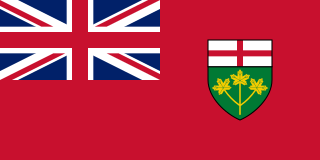The Progressive Party of Canada was a federal-level political party in Canada in the 1920s until 1930. It was linked with the provincial United Farmers parties in several provinces, and it spawned the Progressive Party of Saskatchewan, and the Progressive Party of Manitoba, which formed the government of that province. The Progressive Party was part of the farmers' political movement that included federal and provincial Progressive and United Farmers' parties.
There have been various groups in Canada that have nominated candidates under the label Labour Party or Independent Labour Party or other variations from the 1870s until the 1960s. These were usually local or provincial groups using the Labour Party or Independent Labour Party name, backed by local Labour Councils or individual trade unions. There was an attempt to create a national Canadian Labour Party in the late 1910s and in the 1920s, but these were partly successful. The Communist Party of Canada, formed in 1921/22, fulfilled some of labour's political yearnings from coast to coast, and then the Co-operative Commonwealth Federation - Worker Farmer Socialist" was formed in 1932. With organic ties to the organized labour movement, this was a labour party by definition.
Liberal-Progressive was a label used by a number of candidates in Canadian elections between 1925 and 1953. In federal and Ontario politics, there was no Liberal-Progressive party: it was an alliance between two parties. In Manitoba, a party existed with this name.
The Liberal-Labour banner has been used several times by candidates in Canadian elections:
Richard Gardiner Willis was a politician in Manitoba, Canada. He was the leader of the Manitoba Conservative Party from 1919 to 1922, and served in the Legislative Assembly of Manitoba from 1922 until his death.

The Leader of the Official Opposition in Ontario, officially Leader of Her Majesty's Loyal Opposition, is the leader of the largest party in the Legislative Assembly of Ontario which is not part of the government. The current Leader of the Opposition is Andrea Horwath, leader of the Ontario New Democratic Party, because the NDP won the second largest number of seats as a result of the 2018 election. This is the fifth time the CCF/NDP has formed Ontario's official opposition, and the first time since the 1987 general election.

The Ontario general election of 1943 was held on August 4, 1943, to elect the 90 Members of the 21st Legislative Assembly of Ontario of the Province of Ontario, Canada.

The Ontario general election, 1919 was the 15th general election held in the Province of Ontario, Canada. It was held on October 20, 1919, to elect the 111 Members of the 15th Legislative Assembly of Ontario ("MLAs").

The Ontario general election, 1926 was the 17th general election held in the Province of Ontario, Canada. It was held on December 1, 1926, to elect the 112 Members of the 17th Legislative Assembly of Ontario ("MLAs").

The Ontario general election, 1929 was the 18th general election held in the Province of Ontario, Canada. It was held on October 30, 1929, to elect the 112 Members of the 18th Legislative Assembly of Ontario ("MLAs").

The Ontario general election, 1934 was the 19th general election held in the Province of Ontario, Canada. It was held on June 19, 1934, to elect the 90 Members of the 19th Legislative Assembly of Ontario ("MLAs").

William Edgar Raney, K.C. (1859–1933) was a lawyer, politician and judge in Ontario, Canada, in the early twentieth century.
Beniah Bowman was an Ontario farmer and political figure. He represented Manitoulin in the Legislative Assembly of Ontario from October 24, 1918 to October 18, 1926 and Algoma East in the House of Commons of Canada from 1926 to 1930 as a United Farmers member.
Morrison Mann MacBride was a politician in Ontario, Canada. He was a member of the Legislative Assembly of Ontario who represented the riding of Brant South from 1919 to 1926 and the riding of Brantford from 1934 to 1938. He served in the cabinet of Mitchell Hepburn. He entered politics as a member of the Labour party. From 1934 to 1937 he served as an Independent and from 1937 to 1938 he was a member of the Liberal party.
The 16th Legislative Assembly of Ontario was in session from June 25, 1923, until October 18, 1926, just prior to the 1926 general election. The majority party was the Ontario Conservative Party led by George Howard Ferguson.
Leslie Warner Oke was an Ontario farmer and political figure. He represented Lambton East in the Legislative Assembly of Ontario from 1919 to 1929 as a United Farmers member.
The Progressive Party of Saskatchewan was a provincial section of the Progressive Party of Canada and was active from the 1920s to the mid-1930s. The Progressives were an agrarian, social democratic political movement originally dedicated to political and economic reform and challenging economic policies that favoured the financial and industrial interests in Central Canada over agrarian and to some extent labour interests. Like its federal counterpart it favoured free trade over protectionism.
Manning William Doherty was a farmer, businessman and politician serving as Ontario's Minister of Agriculture during the United Farmers of Ontario-Labour government of 1919 to 1923 and as leader of the Progressives in Opposition before leaving provincial politics.









